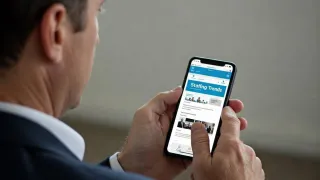
Restarting Your Career Engine: Proven Strategies to Regain Momentum
Revive your stalled career with proven strategies for visibility, skill growth, and reinvention. Learn how to restart momentum with a 90-day career renewal plan. ...more
Staffing
November 01, 2025•4 min read

More Than a Paycheck: Make What You Love Your Work
Discover how to turn passion into a sustainable career with practical strategies, skill growth, and flexibility. Partner with Deerfield Employment Solutions for personalized recruitment that helps you... ...more
Staffing
September 04, 2025•4 min read

How to Recruit Veterans as a First-Time Business Owner
Hiring veterans as a first-time business owner? Learn how to attract, onboard, and support former service members with clarity, structure, and respect—no big HR team needed. ...more
Staffing
August 08, 2025•5 min read

Inclusive Hiring: Empowering Disabled Workers
Explore how inclusive hiring, accessibility, and structured support empower workers with disabilities and create stronger, more innovative workplaces. ...more
Staffing
July 08, 2025•5 min read

How Staffing Trends Are Shaping 2025 Workplaces
Explore the staffing trends shaping workplaces in 2025, including flexible models, remote work, AI-driven recruitment, and Gen Z expectations. Stay ahead with insights on building agile, inclusive tea... ...more
Staffing
April 22, 2025•6 min read

Empowering Your Future: How Women Can Elevate Their Careers and Personal Growth Through New Opportunities
Find out how women can unlock new career opportunities and personal development through strategic approaches such as networking, upskilling, and establishing a strong personal brand. Ready to move for... ...more
Staffing
April 10, 2025•3 min read